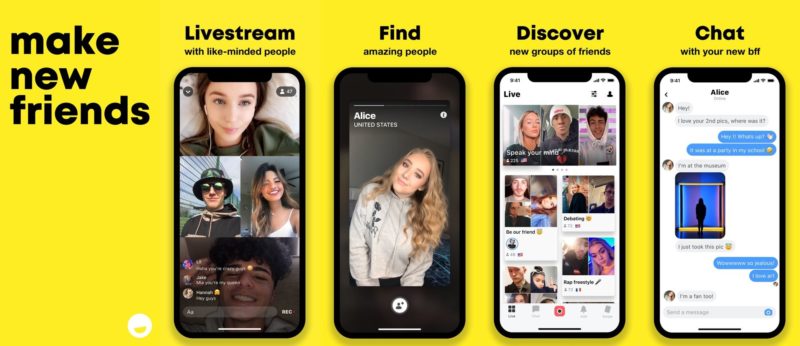Products You May Like
By
Howard Bloom
Someone is trying to end the liberty and freedom of your kids.
On Wednesday April 26th, a bipartisan team that included Hawaii Democratic Senator Brian Schatz, Arkansas Republican Tom Cotton, Connecticut Democrat Chris Murphy, and Alabama Republican Katie Britt introduced The Protecting Kids on Social Media Act. An act that strangles the freedom of teens and children.

The Act would bar children under the age of 13 from creating accounts or interacting with other users on social media and would require parental consent for kids under the age of 18 to use social media.
Under the Act, the Department of Commerce would create a government-run age verification program, an idea that scares the pants off many free speech and privacy activists.
The Act’s supporters point to research that seems to prove that social media use has increased the rate of depression and suicide among adolescents. But something else is at work here. Something ugly.
For over 2,000 years, parents have feared the use of new media by their kids and have attempted to ban it. In 370 BC, Plato was upset about a new medium catching on with kids in Greece. He said that this new medium would dumb down the young. Why? Because kids would no longer be forced to memorize Homer’s Iliad and Odyssey. That memorization, Plato believed, was the source of the Greek mind’s power.
What was the new medium Plato said was crippling the intelligence of the younger generation? Writing.
In 1574, the members of the Common Council of London, were outraged by a new medium that they said was corrupting the young with sexuality and violence. In fact, the Council tried to ban the new medium entirely.
But Queen Elizabeth I was a fan and kept the new medium going. What was this mind-rotting new form of amusement? The theater of Shakespeare.
And in the 1930s, bishops and clergy in America were convinced that a new medium was leading the young down the primrose path to hell. The holy clerics wanted the new medium banned. What were they complaining about? Swing music and the dances organized around it.
Today we use writing every day and we teach Shakespeare to make students smarter. What’s more, we admire the kids who danced to swing music in the 1930s as the Greatest Generation.
To what extent is today’s concern about social media use among the young legitimate and to what extent is it simply panic over a medium embraced by youth?
The fact is that depression among youngsters 18-23 years old increased 83% from 2008 to 2018. And suicides became the second most common cause of death for 15-24 year olds. All as social media was exploding.
What’s more, research shows that when Facebook was first introduced to college campuses in 2004, mental health on those campuses went down. Some Facebook users compared themselves to other Facebookers and became depressed.
But something else may have been responsible for the 83% increase in depression and suicidality—the ever-increasing end-of-the-world predictions of climate change. The Bulletin of the Atomic Scientists calls anxiety over a climate-change apocalypse “’pre-traumatic’ stress disorder.”

Social media may not be the problem, it may be the answer.
According to the Journal for Technology and the Behavioral Sciences, researchers have found that social media is a life saver, especially for youngsters with mental health problems. Says the Journal, “individuals with mental illness appear to turn to social media to share their personal experiences, seek information about their mental health and treatment options, and give and receive support from others facing similar mental health challenges.”
The North Carolina Medical Journal adds that “social media allows” kids “to feel more connected to their friends,” and to have more “meaningful conversations with close friends.” Most important, social media helps troubled kids to find others who are like them, and to get more “social support.”
Continues the North Carolina Medical Journal, “machine learning algorithms have been developed to detect social media-based signals of mental illness, including depression, post-traumatic stress disorder, and suicidality.” And at least two social networking sites, Facebook and Instagram, have “already implemented screening and intervention procedures when users exhibit signs of emotional distress or suicide risk.”
One more tiny little thing. Researchers have found that playing video games does not dumb you down. It increases the size of your brain’s cerebellum.
So social media may actually make a new generation smarter. And give them whole new tools for emotional health.
References:
Naslund, J.A., Bondre, A., Torous, J. et al. Social Media and Mental Health: Benefits, Risks, and Opportunities for Research and Practice. J. technol. behav. sci. 5, 245–257 (2020). https://doi.org/10.1007/s41347-020-00134-x
Samson Nivins, Bruno Sauce, Magnus Liebherr, Nicholas Judd, Torkel Klingberg, The Long-Term Impact of Digital Media on Brain Development in Children, MedRxiv, doi:https://doi.org/10.1101/2022.07.01.22277142
Elia Abi-Jaoude, Karline Treurnicht Naylor and Antonio Pignatiello, Smartphones, social media use and youth mental health, CMAJ February 10, 2020 192 (6) E136-E141; DOI: https://doi.org/10.1503/cmaj.190434
Natasha Whiteman, Potential of social media in promoting mental health in adolescents, Health Promotion International, Volume 34, Issue 5, October 2019, Pages 981–991, https://doi.org/10.1093/heapro/day056
J Nesi, The impact of social media on youth mental health challenges and opportunities, North Carolina medical journal, 2020 – ncmedicaljournal.scholasticahq.com https://ncmedicaljournal.scholasticahq.com/article/55247.pdf
Michelle O’Reilly, Nisha Dogra, Jason Hughes, Paul Reilly, Riya George, Natasha Whiteman, Potential of social media in promoting mental health in adolescents, Health Promotion International, Volume 34, Issue 5, October 2019, Pages 981–991, https://doi.org/10.1093/heapro/day056
Eva Gifford, Robert Gifford, The largely unacknowledged impact of climate change on mental health, Bulletin of the Atomic Scientists, 2016/09/02, doi: 10.1080/00963402.2016.1216505, https://www.tandfonline.com/doi/abs/10.1080/00963402.2016.1216505
______
Howard Bloom of the Howard Bloom Institute has been called the Einstein, Newton, and Freud of the 21st century by Britain’s Channel 4 TV. One of his seven books–Global Brain—was the subject of a symposium thrown by the Office of the Secretary of Defense including representatives from the State Department, the Energy Department, DARPA, IBM, and MIT. His work has been published in The Washington Post, The Wall Street Journal, Wired, Psychology Today, and the Scientific American. He does news commentary at 1:06 am Eastern Time every Wednesday night on 545 radio stations on Coast to Coast AM. For more, see http://howardbloom.institute.
